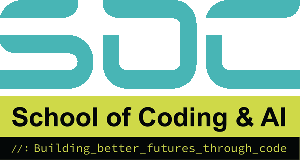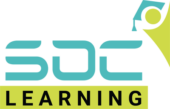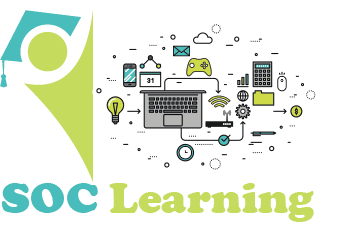Introduction
Teaching children to code is becoming more than simply a fad; in a technologically advanced world, it is essential. Python programming for kids is the best option for novices of all the programming languages available. Why? It is straightforward, strong, and extensively utilised worldwide in a variety of fields, including artificial intelligence and gaming.
This beginner’s guide to Python programming for kids is exactly what you need if you’re a parent or educator unsure of where to begin or how to introduce your child to the world of coding. This guide will take you step-by-step through the process and is full of professional advice, practical applications, and answers to your most pressing problems.
Let’s explore the exciting world of Python and see how your youngster may develop essential 21st-century abilities while going from playing games to making them!
Why Python? Why Now?
Python is one of the most approachable and flexible programming languages available; it’s not simply another coding language. This is why it’s perfect for children:
- Easy to Read and Write: Children may easily learn Python without being overwhelmed since it uses a basic syntax, similar to that of English.
- Widely Used in the Real World: Python runs some of the largest platforms and missions in the world, including NASA and Instagram.
- Fun and Interactive: From the very first lesson, children may see results (such as games or animations), which keeps their incentive levels high.
- Excellent for Future Careers: Python coders are among the highest-paid tech workers, per Glassdoor.
Briefly? The key to success, creativity, and problem-solving in the future is Python.
Children's Beginner's Guide to Python Programming for Kids
This is your go-to framework for teaching python programming for kids in an entertaining, interesting, and instructive manner.
1. Use the Proper Tools First
A simple computer and internet access are all you need. To get you started, consider these kid-friendly platforms:
Python + Scratch: For visual coding, start with Scratch and work your way up to Python.
Trinket.io: An online Python coding platform that doesn’t require any installation.
Thonny: This is an easy-to-use Python IDE for beginners.
Expert Advice: Put interactive platforms first. They maintain your child’s interest and curiosity.
2. Break It Down into Small Projects
Instead of tackling complicated issues head-on, start with small, achievable objectives:
- Put your name on paper.
- Construct a basic calculator.
- Make a digital dice roller.
- Create a minigame similar to “Guess the Number.”
- This gradually increases excitement, momentum, and confidence.
3. Make it entertaining and visually appealing
Children adore images. Use Python libraries such as Pygame (for game development) and Turtle (for drawing). These tools create playable games and move shapes out of abstract code.
“I made my own game, Mom!” Imagine learning Python for a weekend and then hearing that!
4. Include Real-World Education
Do you want to increase its power even further? Integrate your child’s hobbies with Python:
- Do you love animals? Create a pet quiz.
- Interested in mathematics? Make an entertaining problem-solving tool or calculator.
- Do you love stories? Create a game that allows you to choose your path!
When passion and Python come together, the possibilities are unlimited.
5. Response to Frequently Asked Questions by Parents and Teachers
Depending on their interest and reading proficiency, most children can begin studying Python between the ages of 7 and 12. Scratch and other visual coding tools are excellent starting points for younger students.
Q: Does my child need to be proficient in maths?
Absolutely not! Python fosters logical thinking in children, and coding frequently leads to the natural development of math skills.
Q: Is it possible to learn Python on your own?
Definitely. Although guided lessons are always beneficial, children can study at their own pace with the use of tools like SOC Learning, YouTube tutorials, and interactive platforms.
Q: Is learning to code online safe for children?
Yes, particularly on reputable sites like SOC Learning where structure, safety, and support are top concerns.
Real Impact, Real Stories
Let’s use Sam, who is ten years old, as an example. Sam could hardly type without glancing at the keyboard when he first began learning Python. Three months later, he founded a school coding club and made his calculator app!
Q: What was different?
Python programming helped Sam develop his inventiveness, curiosity, and self-assurance.
6. Advantages Outside of the Screen
Python teaches children more than just how to code. Its advantages include the following:
- Enhanced Ability to Solve Problems
- Critical and Logical Thinking
- Innovation and Creativity
- Adaptability and endurance
- Self-assurance in STEM
Early coding instruction increases pupils’ likelihood of pursuing STEM careers by 17%, according to Code.org. In today’s job market, that is a huge advantage! It is thus clear that learning Python means making the children future-ready for a successful career.
7. Your Next Moves: How to Begin Right Now
Here is a detailed action plan for parents, guardians, and teachers:
✅ Discover Python Tools like Thonny or Trinket
✅ Enrol in a Online Course with SOC Learning
✅ Develop the Habit of Coding—even 30 minutes a day can make a big difference
✅ Celebrate Progress—reward yourself for even the tiniest victories!
Special Tip: SOC Learning provides structured Python classes designed especially for children, combining enjoyment with fundamental coding abilities.
Conclusion: Let’s Code the Future
Python programming for kids is an investment in their future, not merely a fun pastime. Learning Python gives children the skills they need to not just survive but flourish in an increasingly digital environment.
Python is therefore the ideal initial step, whether your youngster wants to build fun things or pursue a career in data science or game development.
Give your kids the freedom to experiment, create, and shine since all great programmers begin with “Hello, world!”
Frequently Asked Questions
Python is one of the most popular and approachable programming languages in the world. It stands out for its simplicity, adaptability, and wide range of real-world applications. Here are some amazing Python facts that children (and parents) frequently find exciting:
- Designed for simplicity: Guido van Rossum invented Python in 1991. He aimed to create a language that was simple to read and write, making it ideal for novices.
- Named after a comedy show: The language is called after a comedy show, not the snake! It is named after Monty Python’s Flying Circus, a well-known British comedy ensemble.
- Used everywhere: Python powers some of the world’s top technology and institutions, including Google, YouTube, Netflix, and NASA.
- Beginner-friendly syntax: Python resembles standard English, which is why youngsters frequently find it easier to learn than other languages.
- Great for AI and coding games: Python is commonly used in artificial intelligence, game development, web development, and even robotics.
There is no “perfect age” to start coding; however, many children explore programming principles between the ages of 6 and 8. At this age, children are naturally curious and willing to learn new things through play.
- Early exposure to coding benefits children.
- Develop logical thinking and problem-solving abilities.
- Build confidence in creating technology rather than merely consuming it.
- Develop resilience when resolving faults or troubleshooting their programs.
- Boost their creativity with projects like animations, games, and applications.
For younger children, learning generally begins with block-based coding, such as Scratch. As they gain confidence, they can switch to text-based coding, such as Python.
Python instruction in primary schools emphasises hands-on, interactive learning rather than lengthy lectures. The idea is to assist children understand how coding works through engaging activities.
Here’s how it’s typically introduced in the classroom:
- Step-by-step lessons: Teachers begin by printing simple messages on the screen (for example, print(“Hello, world!”).
- Mini projects: Students may develop short games, digital stories, or quizzes to make learning more enjoyable.
- Real-world connections: Lessons frequently demonstrate how Python underpins daily technology, allowing children to understand its purpose.
- Pair or group work: Children frequently work together to solve difficulties, which improves cooperation and communication skills.
- Use of interactive tools: Platforms such as Replit, Trinket, and IDLE provide quick feedback, making the experience more enjoyable.
By the conclusion of primary school, most youngsters grasp loops, conditions, variables, and functions, which are all essential building blocks of programming.
Python is one of the most adaptable programming languages, making it a great choice for both kids and experts. Here’s why it’s so effective:
- Easy to understand and powerful to use: Python’s straightforward structure makes it easy for newcomers to get started, but it’s also powerful enough for more complex applications like artificial intelligence, data analysis, and app development.
- Cross-industry applications: Python is utilised in a variety of settings, including banking, healthcare, education, and space research.
- Strong community support: Python is one of the most active online communities, so learners may readily access lessons, forums, and solutions to their problems.
- Encourages problem-solving: Python encourages youngsters to think critically, break down complex problems, and build step-by-step solutions.
- A stepping stone to other languages: Once children grasp Python, they may easily learn other languages such as Java, JavaScript, and C++.
Python skills are in great demand across industries, so mastering them early can lead to intriguing job prospects in the future. Here are some popular job pathways in which Python plays an important role:
- Software Developers: Creating websites, apps, and software solutions.
- Data Scientist: Analysing data to make smarter business decisions.
- AI & Machine Learning Engineer: Creating intelligent systems like chatbots, recommendation engines, or self-driving technologies.
- Game Developer: Create interactive games and digital experiences.
- Cybersecurity analysts: Responsible for protecting networks and systems against cyber threats.
- Robotics engineers: Program robots and automated systems.
Even if children may not finish up in a tech-related career, Python fosters important 21st-century abilities such as logical thinking, creativity, and digital literacy, which are useful in practically any field.








